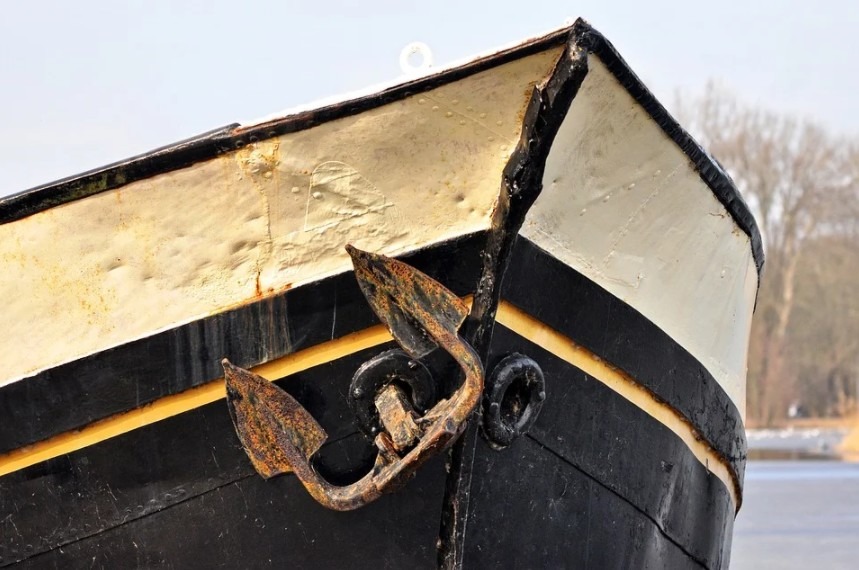Before the modern era, one of the major causes of damages on ships is the microorganisms that attach to the ship’s hull. These microorganisms, specifically barnacles and weeds, would often cause deterioration on the ship called “biofouling.” Whenever microorganisms, plants, small animals, or algae attach to the wet parts of the ship, they would often cause structural and functional deficiencies on the vessel, as they would usually block passages or prevent several parts from moving properly. Because of these problems, many ship manufacturers have tried to come up with ways to stop microorganisms from building up in the wet ship parts. One of their solutions was anti-foul paint, a specialized category of paint that is specifically utilized as the outer layer of the ship’s hull. To know more about this impactful invention, let us take a look at the amazing origins of the anti-fouling coating.
Origins of Anti-Fouling Coating
Centuries before the invention of anti-fouling coating, it was said that during the Age of Sail (15th century to 19th century), boat builders would often use thin sheets of copper (copper sheathing) to prevent marine life from sticking to the hull of the ships. In addition to anti-fouling, copper sheathing is also effective in prolonging the life of the ship by reducing the corrosive effects of saltwater. The copper sheathing is developed and invented by the United Kingdom’s Royal Navy during the 18th century, although some historians believe that the practice of covering the hull with various materials has already been utilized since the early 16th century. The other materials used before copper were the white stuff (made up of brimstone, whale oil, and rosin) and black stuff (made of pitch and tar).
By the 1850s, copper sheathing was succeeded by copper sulfide, which is used as an anti-fouling paint for ships. However, the process of painting ships with copper sulfide was not yet popular during that era, and it only became abundant in the 1900s when the United States Navy began utilizing anti-fouling paint to prevent biofouling in their iron ships. Interestingly, before they discovered anti-fouling paint, the US Navy once proposed that the senate should limit the number of ships that are taken to sea. Furthermore, the US Navy also suggested that the government should sell most of the iron ships in their possession in order to not deal with maintenance caused by biofouling. In the end, after finding out that anti-foul paint produces great results for other boats and ships, the US government decided to keep the iron ships and apply copper sulfide on their hulls.
To continue the research on improving the effects of anti-fouling paint, the US Navy funded the Woods Hole Oceanographic Institution, who also specialized in marine life research. The findings of the said institution were published as a book in 1952, and it currently serves as the inspiration behind some of the most advanced anti-fouling technologies today.
One of those advanced anti-fouling technologies is Sharklet, a plastic sheet product that can serve as a coating on the ships to prevent the growth of bacteria and other microorganisms. Sharklet was invented in 2003 by Dr. Anthony Brennan, an engineering and materials science professor at the University of Florida. According to Dr. Brennan, he came up with the Sharklet while observing how barnacles and other organisms in the sea would add weight to ships and reduce fuel efficiency on the vessels. After the observation, he then went on to study the skin of sharks, which is said to have natural anti-fouling properties that prevent microorganisms from thriving and growing on it. Upon further examination, the denticles (scale of sharks) have this distinct diamond pattern and a unique texture that Dr. Brennan believes is the key to making an anti-fouling material.
By 2003, Dr. Brennan revealed the Sharklet plastic sheet, and it was then sold in 2007 under his Sharklet Technologies company after further improvements. The Sharklet material replicates the shark skin’s diamond pattern and anti-fouling properties, which could then be used to prevent bacterial growth in areas where they would usually grow and live. Because of how the Sharklet material is inspired by the skin of sharks, the process of conceptualizing the invention is considered biomimicry, a method of invention wherein the inventor takes inspiration from animals, plants, and other living organisms.
The Sharklet material is not only used on boats, but also on hospitals, kitchens, moisture-filled areas, or other places where there is a high chance for bacteria and other microorganisms to thrive. Sharkelt currently has six different patents, and all of these patents are applied at the United States Patent Office. Besides the plastic sheet coating, Sharklet is now also available as a sharkskin wound dressing, a central venous catheter, an endotracheal tube, and other apparatuses and items that are related to the medical field.
